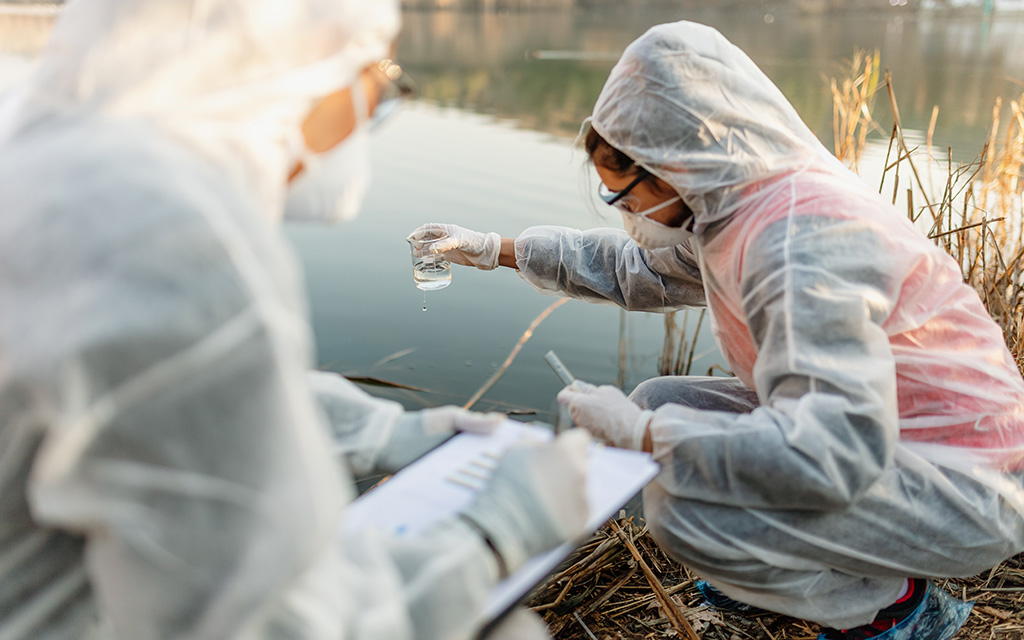Emerging contaminants (ECs), now under scrutiny due to their potential adverse effects on the environment and human health, are found in trace amounts in water sources. The NIAGARA project addresses this concern by focusing on four specific emerging pollutants: bisphenol A (BPA), imazalil, ibuprofen, and paracetamol. NIAGARA aims to contribute to the monitoring and remediation of these pollutants in Drinking Water Treatment Plants (DWTPs) through the development of biosensors, an enzymatic degradation system, and a UV/TiO2 photocatalysis-based disinfection method.

What are emerging pollutants?
Emerging contaminants (ECs) also known as "Contaminants of emerging concern", refers to a diverse array of molecules and metabolites present in the environment. These substances, previously undetected in the environment, have only recently become subjects of study and monitoring, despite potentially having existed in the environment for an extended period. ECs have become a growing concern due to their ability to enter the environment and cause adverse ecological and human health effects.
Found in trace amounts ranging from parts per trillion (ppt or ng/L) to parts per billion (ppb or μg/L), these contaminants encompass a diverse range of substances. Several studies on surface water, drinking water, subsurface water, and effluent/wastewater have revealed a wide range of ECs, including pharmaceuticals, hormones, pesticides, artificial sweeteners, personal care products, disinfection by-products, UV filters, and other industrial chemicals [1,2].
In light of the pervasive presence of ECs in various water sources, the last line of defence before these substances reach consumers is the Drinking Water Treatment Plants (DWTPs). However, more than 1,000 substances remain not routinely monitored in such plants. In this context, the NIAGARA project aims to contribute to the monitoring and remediation of 4 emerging pollutants of very different chemical nature DWTPs.
Which emerging pollutants is NIAGARA working with?
- Bisphenol A (BPA) is a chemical compound that has been widely used in the production of plastics and epoxy resins since the 1960s. Despite its widespread use, BPA has been a subject of concern and controversy due to its potential health effects. Research studies, primarily conducted on animals, have suggested that BPA may act as an endocrine disruptor.
- Imazalil is a synthetic fungicide that belongs to the class of compounds known as triazoles. It is commonly used in agriculture to control fungal diseases in crops, particularly in fruits and vegetables. The presence of imazalil is concerning the European Food Safety Authority (EFSA) since it is not regulated but ubiquitous in fruit plantations, present in +0.072 ppb in surface waters and acts as an endocrine disruptor and carcinogen.
- Ibuprofen and paracetamol. Pharmaceuticals are one of the most ubiquitous, being the most important ibuprofen (detected in up to 8,000 ng L-1 in European freshwaters, 2019) and paracetamol (40 ng L-1).
- Even though Helicobacter pylori is not considered as an EC, there are concerns related to H. pylori in terms of its impact on water quality and potential transmission through water sources. The bacterium can be present in human faeces and contaminated water supplies or inadequate wastewater treatment can contribute to the spread of H. pylori. In areas with poor sanitation, the bacteria may find its way into water sources, posing a risk of infection when water is consumed.
How will NIAGARA contribute to this issue?
The NIAGARA project will tackle both monitoring and remediation of these water pollutants in DWTPs by developing multi-analyte biosensors for water pollutants (BWP), designing a manufacturing scheme of an immobilized enzymatic degradation system (IEDS) to remove chemical pollutants and pathogens and validating an efficient and safe disinfection method based on UV/TiO2 photocatalysis. Moreover, a hydraulic model for real-time monitoring of the propagation of these 4 water contaminants will be developed.
References
[1] Domingo, J. L., & Nadal, M. (2019). Human exposure to per- and polyfluoroalkyl substances (PFAS) through drinking water: A review of the recent scientific literature. Environmental Research, 177, 108648. https://doi.org/10.1016/j.envres.2019.108648
[2] Wen, Y., Schoups, G., & Van De Giesen, N. (2017). Organic pollution of rivers: Combined threats of urbanization, livestock farming and global climate change. Scientific Reports, 7(1), 43289. https://doi.org/10.1038/srep43289